Halloween is just around the corner — and for our Little Scholars, it’s one of the most magical times of the year! From spooky ghosts to silly pumpkins and brave superheroes, dressing up is a chance for children to explore creativity, pretend play, and imagination.
At Little Scholars, we love seeing our children light up when they put on their costumes. But we also know that sometimes, time (and the budget!) can get away from us.
If you’re wondering, “What Halloween costume can I make at the last minute?” — don’t worry. We’ve got you covered! Here are some of our favorite easy, affordable, and crowd-pleasing Halloween costume ideas for kids, inspired by what we’ve seen our Little Scholars wear over the years.
You can never go wrong with a classic ghost costume — it’s timeless, simple, and spooky in all the right ways.
What you’ll need:
How to make it:
Cut out eye holes and pop the sheet over your child’s head. You can cut the bottom in fun jagged edges or keep it simple.
Quick tips:
It’s one of the easiest last-minute Halloween costumes for kids, and it never fails to impress!

If you’re looking for something with a bit more character, Frankenstein is a Halloween favorite that’s easy to recreate at home.
Here’s how to make your own Frankenstein costume:
💡 Variation: Got leftover fabric or craft supplies? Turn it into a colorful DIY monster costume with mismatched patches, horns, and fuzzy details — a great twist on the Frankenstein look!

If you’re running short on time, you can still find budget-friendly Halloween costumes at local stores like Kmart — both for under $15!
These store-bought options are quick, affordable, and stress-free — perfect for parents looking for last-minute Halloween ideas.
💡 Variation: Got leftover fabric or craft supplies? Turn it into a colorful DIY monster costume with mismatched patches, horns, and fuzzy details — a great twist on the Frankenstein look!
A Halloween favourite that never gets old!
If you’re short on time (or don’t want to splurge), grab a black t-shirt and a tutu for a quick DIY witch look. Add some green face paint and a broom made from a stick and paper streamers — and you’re done!
For an easy store-bought option, Kmart’s Witch Costume is both affordable and adorable. Pair it with sneakers or boots, and your child will be ready for a day of spooky fun.

If your child already knows exactly who they want to be, don’t stress!
Your local retailers have plenty of ready-to-go costumes featuring favourites like Batman, Spider-Man, Darth Vader, Bluey, firefighters, princesses, and more.
Check out Kmart, Big W, Target, or Spotlight for affordable options that fit most budgets and ages.
And if all else fails — pull out your favourite Book Week costume! It’s a great way to reuse and recycle outfits your little one already loves.
We’re celebrating Halloween with a night full of fun at Little Scholars Ormeau 2 on Friday, 31 October!
Expect:
Whether you’re a Little Scholars family or part of the local Ormeau community, everyone’s invited — so grab your costume and come join the fun!
Halloween doesn’t have to be expensive or complicated. With a little creativity — and a few household items — you can create fun, memorable costumes your kids will absolutely love.
At Little Scholars, we believe Halloween is all about imagination, joy, and making memories together. So grab a sheet, some face paint, and a dash of creativity — your perfect costume is closer than you think!
A brighter future for families is on the way. Starting 5 January 2026, the child care subsidy 2026 changes will introduce the new 3 Day Guarantee, giving CCS eligible families access to three full days (36 hours) of subsidised childcare per week – no matter how many hours you work or study.
At Little Scholars, we know how important affordable, flexible care is for families, and we’re here to help you understand what these changes mean for you.
The 3 Day Guarantee is part of upcoming changes to the Child Care Subsidy (CCS). It removes the strict work and study requirements previously tied to accessing subsidised hours of care according to the Department of Education.
Here’s what families can expect from 2026:
This means more affordable care, more flexibility, and more opportunities for your child to thrive in early learning.
Not sure how much Child Care Subsidy you might be entitled to? Use our online Child Care Subsidy Calculator.
For many families, these changes will mean thousands of dollars in savings each year. But beyond the financial relief, it means every child has the opportunity to access quality early education – the foundation for lifelong learning, confidence, and wellbeing.
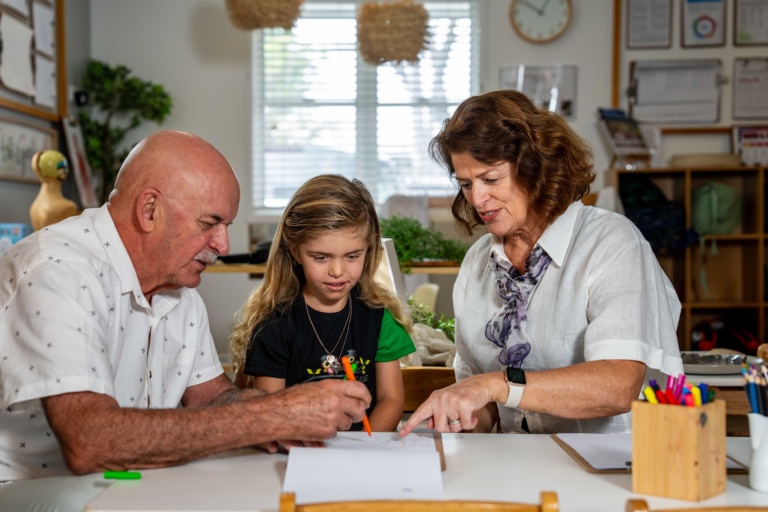
With your three guaranteed days of subsidised care, your child will experience the very best in early education across our purpose-built campuses.
Children connect with the natural world through exploration and play.
Bush, Beach, and Pram-kinder programs, music, dance, sport, soccer, swimming, gardening and more.
Experienced teachers deliver our nationally recognised Kindergarten program.
At Little Scholars, children engage with STEM learning (science, technology, engineering, and mathematics) through hands-on, play-based experiences. Alongside our brand-new, Australian-first, WonderNest Virtual Reality program, opening new worlds of discovery and learning for kindergarten children in 2026.
Every child is more than just a number, they are part of our family. We provide a safe, nurturing, and supportive environment where children feel valued, celebrated, and encouraged to be themselves.
Our educators take the time to understand each child’s unique personality, interests, and learning style. This personalised approach to childcare ensures that every child feels a sense of belonging while developing confidence and independence.
Families choose Little Scholars because we combine high-quality early learning programs with a genuine family-first philosophy. From the moment you step into our campuses, you’ll see children thriving in a space that feels like home – where safety, wellbeing, and happiness come first.
With the 3 Day Guarantee set to launch in 2026, we anticipate an incredible level of interest and demand across our campuses. If you are a current family and your current CCS entitlement is less than 72 hours per fortnight, please speak with your Campus Manager to learn more about the 3 Day Guarantee and how to optimise your Child Care Subsidy.
If you are looking to enrol your child, you can book a tour at your local Little Scholars Campus or chat with our enrolments team on 1300 896 139 to see how your family could benefit from the CCS changes.
Wondering what an Educational Leader at Little Scholars does and why it’s important for your child’s early learning? This key role shapes the high-quality education your child receives. It’s one of those behind-the-scenes roles that plays a huge part in your child’s day-to-day experience.
So let’s break it down in parent terms.
At Little Scholars, every campus has an Educational Leader – someone whose main job is to support our amazing educators and make sure the programs we run are the best they can be. They guide the team, introduce new ideas, help with planning and problem-solving, and basically make sure everything we do is helping your child learn, grow, and thrive.
They’re not counted in educator-to-child ratios, so they have time and space to really focus on quality. That means they’re free to mentor educators, work on exciting learning projects, and stay up-to-date with the latest in early childhood education.
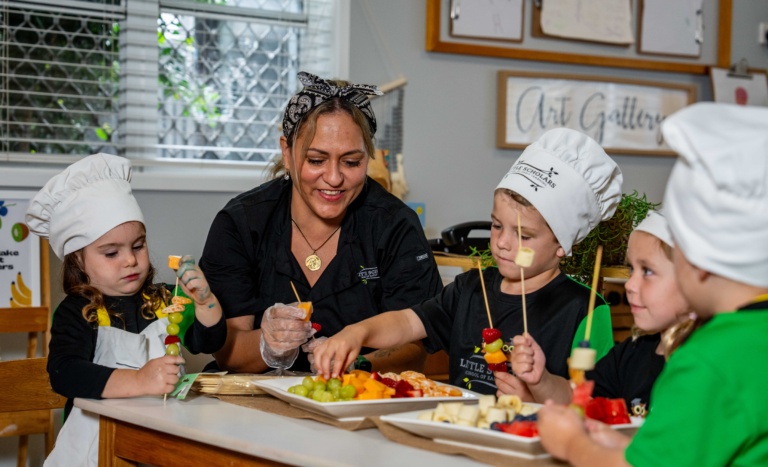
Because when educators are well-supported, children benefit… big time.
Educational Leaders help make sure every learning experience is thoughtful, engaging, and tailored to children’s needs. They’re constantly reflecting on what’s working, what could be better, and how we can keep improving. That means your child is part of a program that’s always growing and evolving, just like them.
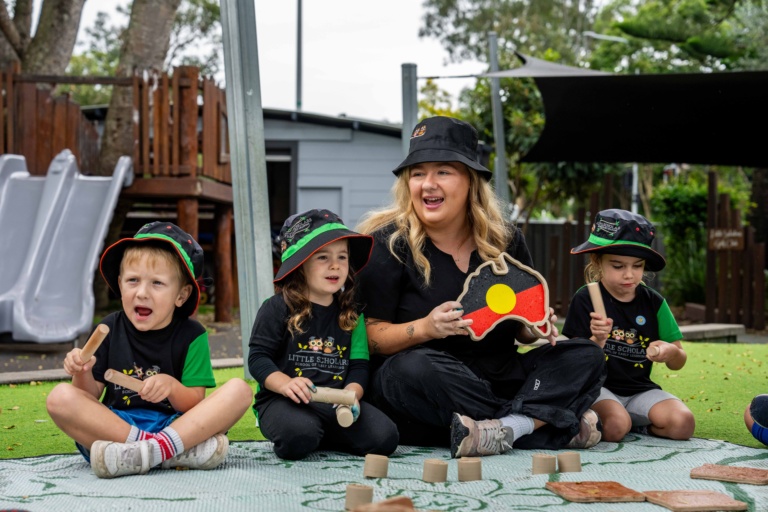
At Little Scholars, we do more than just tick the boxes. Our Educational Leaders:
In simple terms: they help make Little Scholars the best it can be — for our team, and most importantly, for your child.

Our Educational Leaders might not be in every photo or pickup conversation, but their impact is felt in every room, every interaction, and every learning moment. They’re here to support our team so your child can have the rich, high-quality early learning experience they deserve.
Because when our educators thrive, your little scholar does too.
The safety and wellbeing of every child is the highest priority. This checklist will help you ask the right questions, know what to look for during centre visits, and support your child’s personal and emotional safety to ensure your chosen childcare centre offers a safe, nurturing experience for your little one.
Is the centre secure?
Ask about sign-in/out procedures and entry controls. For example, does the centre use PIN-coded entry or other systems to ensure only authorized caregivers can pick up your child? A quality centre will have strict protocols like secure doors/gates and verified pick-up.
At Little Scholars, safety is paramount – all centres are PIN-access only, and only pre-authorised parents/guardians can drop off and collect children.
What are your hygiene practices and sick child policies?
Inquire how often toys, surfaces, and bathrooms are cleaned and how educators promote handwashing for children. Also ask about policies for managing illness (e.g. when children are sent home with fevers and how illness outbreaks are communicated). Top centres maintain rigorous cleanliness routines – e.g. frequent handwashing, sanitising of toys and surfaces, and proactive illness prevention measures to keep everyone healthy.
How do you ensure proper supervision and ratios?
Verify that the centre meets or exceeds the legal educator-to-child ratios at all times, and ask how they maintain active supervision. Educators should be actively engaged, not just present – meaning they are constantly watching, listening and interacting with children to anticipate and prevent issues.
Quality providers follow the National Quality Framework (NQF) requirements for ratios and often position staff strategically (indoors and outdoors) so every child is visible and supported. Little Scholars, for instance, adheres to NQF educator-to-child ratios at all times to ensure attentive care.
What are your staff vetting and child protection practices?
Ask if all staff (including assistants, casuals and volunteers) are trained in child protection and mandatory reporting of any harm. A reputable centre should have a formal child protection policy (ideally accessible on their website) and regularly train staff to recognize and respond to signs of abuse or neglect. Inquire about staff background checks beyond the mandatory Working With Children Check – for example, do they conduct thorough reference checks and ongoing screening to ensure only suitable people work with kids? Also ask if the centre has policies to prevent one-on-one isolated interactions.
Finally, find out if there is a designated Child Safety Officer or contact person whom children, staff or parents can approach with concerns – this shows the centre takes child protection seriously.
How do you handle emergencies and accidents?
A good centre should have clear emergency response plans (for fires, evacuations, lockdowns, etc.) and conduct regular drills. Ask how often they practice fire/evacuation drills and how they make these drills child-friendly (some centres use mascots or games to teach emergency routines in a non-scary way). Verify that multiple staff members are certified in first aid, CPR, and anaphylaxis management at all times, and ask about the procedure if a child is injured or unwell (Do they have first aid kits readily available? Will they call you immediately? How do they record and report incidents?).
How do you manage children’s health needs, like allergies or medications?
If your child has any allergy, asthma or other medical condition, ask what precautions and protocols the centre has. Do they have individual medical management plans and risk minimisation strategies for each child with allergies/medical needs? Leading centres use tools like allergy-aware placemats or ID cards and work with families to create detailed care plans (including emergency action plans for allergic reactions). You should also ask about food safety: is the centre nut-free or egg-free if needed? Knowing that a centre takes nutrition and allergies seriously – with strict food safety guidelines and clear communication about dietary needs – will give you peace of mind.
How do educators support children’s emotional safety and behaviour?
Ask about the centre’s approach to guidance and discipline.. For example, how do they comfort a distressed child or handle biting, tantrums or conflict between kids? Listen for answers that highlight emotional support and redirection. Caregivers should be attuned to each child’s feelings – trained to spot signs of anxiety, tiredness or frustration – and respond with care. It’s a good sign if the centre mentions nurturing each child’s sense of belonging and having strategies for helping children feel secure (such as key educators for each child, cozy quiet areas for children to retreat to, etc.). Also, ask if they have programs or curriculum aspects that build children’s social and emotional skills. An environment where children are treated with respect and their feelings are acknowledged is crucial for emotional safety.
How do you maintain a safe physical environment?
Inquire about how often the facilities and equipment are inspected or maintained. Does the centre conduct regular safety audits or daily hazard checks on playgrounds and classrooms? A great centre will have a schedule for routine cleaning and safety inspections. Also consider asking about sun safety policies – in Australia, centres should have a SunSmart policy (e.g. requiring hats and sunscreen for outdoor play and providing shaded areas). A diligent centre will be proud to discuss their procedures for things like safe sleep (for babies), sun protection, and general workplace health and safety compliance.
When you tour a prospective childcare centre, use your eyes and instincts. Here are key safety indicators to look for on your visit:
Check that the centre looks and smells clean. Floors, surfaces, toys, and bathrooms should be well-maintained and sanitary. Look for evidence of regular cleaning – e.g. educators wiping down tables, a clean nappy-changing area (with gloves and sanitiser), and children being guided to wash hands (especially after toileting or before meals). A centre that prioritises hygiene will have protocols visibly in action (like frequent handwashing and toy sanitisation) to reduce germs. Trust your nose – a fresh, clean environment (with proper diaper disposal and ventilation) indicates good hygiene practices.
Pay attention to how staff interact with the children in their care. Are the educators warm, attentive, and engaged on the children’s level? You should see caregivers who are actively involved in activities – chatting with kids, comforting them as needed, and actively supervising. Look for active supervision – educators scanning the room and playground, frequently counting children, and positioning themselves so they can see all kids. Positive, caring interactions (smiles, gentle tones, educators down at eye level with kids) also foster an emotionally safe atmosphere for your child.
The children at the centre should appear happy and comfortable. During your visit, note the children’s mood and engagement: are most kids actively playing or calmly involved in activities? It’s normal to see an upset child occasionally, but in a quality centre educators will address it promptly with comfort. If you see lots of crying or distressed children without comfort, that’s a concern. Ideally, you’ll get the sense that children are enjoying their day and are well cared for – smiling, laughing, or focused on play, with educators close by for support. A cheerful, relaxed vibe among the children is a great sign.
As you tour, inspect the classrooms and playground for potential safety hazards. Cleanliness is one aspect, but also check safety details: are play equipment and toys in good repair? Are there child-safe features like socket covers, secure baby gates on stairs, and locked cupboards for chemicals? In the outdoor area, look for soft-fall surfaces under climbing equipment, sturdy fencing around the perimeter, and shade covers or trees for sun protection. If you can, note whether emergency information (like evacuation plans and fire extinguishers) is visible – many centres post evacuation diagrams in each room. These little details show that the centre proactively maintains a safe environment for children to explore.
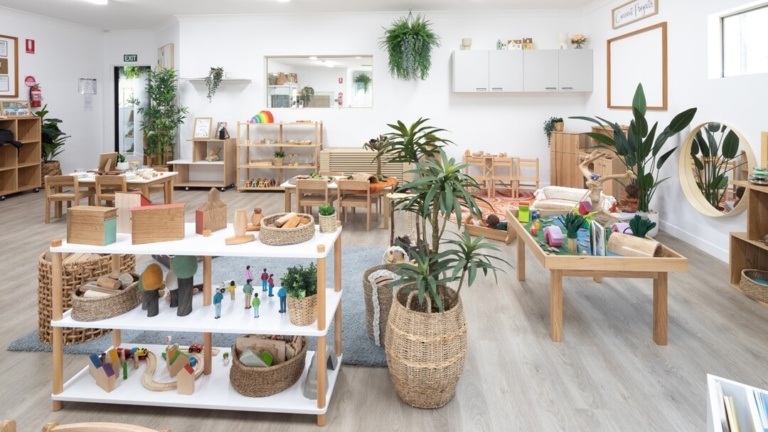
Observe the staffing on the day – does it appear they have enough educators in each room, and are they attentive? You might do a quick headcount of children vs. staff in a room to see if it aligns with expected ratios for that age group. Beyond numbers, look at how the team operates: are they communicating with each other about supervision (for example, one says “I’m stepping away to grab more art supplies” and another covers? Are they on the move, scanning and engaging, rather than all clustered together? High-quality centres foster a culture of vigilant supervision – educators should look alert and involved. If you visit during a transition (like lunchtime or nap time), notice if routines seem calm and well-managed (this reflects good training and adequate staffing). A smoothly run classroom with attentive staff indicates your child will be well supervised and safe.
Trust your gut on the overall feel. A centre that is open, welcoming, and transparent with parents will make you feel at ease during the visit. Notice if the director or educators willingly discuss safety topics and proudly show you around every area. Do you see evidence of a positive culture, like children’s artwork on the walls, safety posters, or a friendly rapport between staff and families at pick-up time? Little things like educators greeting children at drop-off or reminding them “Hat on for outside, let’s be SunSmart!” show a caring, safety-conscious environment.
In short, you want to see that what the centre says about safety in their policies is truly happening day-to-day: clean and secure facilities, engaged and loving caregivers, and children who appear secure and happy.
(During your visit, consider bringing this checklist along. Many parents also find it helpful to take notes right after each tour, while impressions are fresh.)
Choosing a great centre is only part of keeping your child safe – as parents, we also play a big role in preparing children with the skills and confidence they need. Here are some tips to empower your child and foster a sense of security as they start childcare:
Even from toddler age, begin teaching your child simple personal safety concepts in a non-scary way. For example, Bravehearts recommends three “body safety” rules every child should know:
By reinforcing these messages regularly, you help your child understand their rights and feel confident to assert themselves. Role-play scenarios with toys (“What if someone at childcare does something that makes you uncomfortable?”) and practice using strong voices to say “No, stop!” – make it a game so your child feels proud and powerful using their safety voice.
From as early as preschool age, teach your child the proper names for all their body parts, including private parts, and talk about body boundaries. This normalises their understanding and removes shame or secrecy. Let them know that their private parts are private – no one should touch them except perhaps a doctor or caregiver helping with hygiene, and even then, it should be only in appropriate ways. Explain that safe touches (like helping with a nappy change or a gentle check-up by a doctor – and only with permission) are different from unsafe touches (any touch meant to hurt or that makes them feel bad). Encourage them that it’s always okay to say “No” or move away if someone’s touch or play makes them uncomfortable, and to tell a teacher or tell you. Keeping these talks calm and factual (not scary) will help your child feel comfortable asking questions.
By having ongoing, open conversations, you empower your child to understand consent and know that they can always come to you with anything.
Help your child know who their trusted adults are, both at childcare and at home. At Little Scholars, educators talk with children about identifying their “safe people” – those they can go to if they feel upset or unsafe. You can do this at home by explaining, “If you ever feel sad or scared at daycare, you can tell Miss Emily (for example) and they will help you. And you can always tell Mummy or Daddy anything when you get home.” Make it a habit each day to ask open-ended questions about their time at childcare. Listen calmly and attentively to whatever they share – this builds their confidence that they can talk to you about anything.
The goal is to ensure your child never feels like they have to keep a secret. Praise them for speaking up about their feelings, and reassure them that you and their educators are there to keep them safe. Creating this open channel early on increases the likelihood that your child will speak out if something is wrong.
Young children feel safer when they know what to expect. You can help by establishing a predictable morning routine and a special goodbye ritual for drop-offs. For example, arrive with a few minutes to settle your child in, then do a consistent farewell (perhaps a hug, a high-five, or a “kiss and go” routine. Always say goodbye – as hard as it can be, avoid sneaking out when your child is distracted. A proper goodbye (even if it’s tearful) builds trust, because your child learns that you won’t disappear without warning and that you will come back. Educators also encourage this; they note that children handle separation better in the long run when they see you leave confidently after a loving goodbye. Over time, your little one will come to anticipate the routine and this consistency helps them feel in control and secure.
Check with your centre if your child can bring a comfort object from home, especially in the early weeks. A familiar lovey – like a favourite teddy, blanket, or even a family photo in their bag – can provide great emotional support during the day. Let your child know they can ask their teacher for their comfort item if they’re missing you. Many centres encourage this, as having a bit of “home” close by can soothe separation anxiety and help a child self-settle if they feel upset. Label the item with your child’s name and explain that it’s there whenever they need a hug or a reminder of home. Such comfort items often become a trusted buddy that helps your child feel safe in a new environment.
Children take emotional cues from their parents. When they see you showing warmth and trust toward their educators, it boosts their own sense of security with those caregivers. Take a little time at drop-off or pick-up to greet and chat briefly with the staff (“Hello! How was her morning today?” or “He’s excited to show you his dinosaur shirt!”). If your child observes you smiling, sharing information and treating the teacher as a trusted friend, they’ll feel more comfortable in the educator’s care. This also models positive social interactions for your child. When your child sees that you and their carers are “on the same team,” it reinforces their confidence that they are in a safe place with grown-ups who care about them.
Help your little one know what to expect at childcare to reduce anxiety. You can role-play parts of the day – for example, pretend “school” at home: practice hanging up a backpack, singing a “hello” song, or taking turns with toys to mimic group play. Visit the centre’s orientation or “stay and play” sessions if offered, so your child can explore the new environment with you the first time. Reading books about starting daycare or looking at the centre’s photo boards of activities can also make the unknown more familiar.
The more your child knows the routine – snack, play, nap, etc. – the more secure and in control they will feel. If possible, align some home routines to childcare’s schedule (for instance, gradually adjust nap times to match). When children can predict what will happen next, it lowers their stress and helps them feel safe and confident in the new setting.
Make safety habits fun parts of your child’s day so they become second nature. For example, practice good hygiene habits together (e.g. washing hands before eating). Involve your child in safety routines like tidying up toys to keep pathways clear and holding hands when crossing the road. These little practices instil a general safety awareness.
Additionally, teach your child basic information like recognizing their name and your face, and as they get older, knowing your name and phone number – important in case of any separation (for a 4-5 year old, this can be done in a playful way). While childcare centres have robust safety measures, a child who knows how to follow rules like staying with the group, not running out doors, and telling an adult if they “don’t know where Mummy/Daddy is” will be even safer.
Lastly, maintain an ongoing dialogue with your childcare provider about safety. Ask about any safety education they provide to the kids (Little Scholars bring use programs like Bravehearts’ Ditto’s Keep Safe Adventure show to teach children about personal safety in an age-appropriate way). Reinforce those lessons at home – for example, if they learned about “yes and no feelings” or “private parts are private,” continue that conversation with your child so they see a consistent message.
Keep yourself informed on the centre’s policies (read the parent handbook sections on health, emergencies and child protection) and don’t hesitate to raise questions or suggestions. When parents and educators work as partners, children benefit. By showing your child that you trust the centre yet also staying actively engaged (volunteering at events, attending parent meetings on safety topics, etc.), you reinforce to your little one that they are safe and loved in the childcare environment. And that confidence – knowing the adults in their world are looking out for them – is perhaps the greatest gift of safety you can give your child.
To learn more about the child safety practices at Little Scholars School of Early Learning, visit this article. To book a tour of one of our 17 campuses across the Gold Coast, Brisbane, Redland Bay or Ipswich, call 1300 896 139 or visit our homepage here.
When it comes to choosing the best childcare for your little one, childcare safety is always the top priority. As parents, you want to feel assured that your child is not only having fun and learning, but also safe in a nurturing environment. At Little Scholars, a leading early learning provider with locations across the Gold Coast, Brisbane, Ipswich, and Redland Bay, childcare safety isn’t just a requirement, it’s at the heart of everything we do.
From the moment you walk into a Little Scholars centre, you’ll notice the care we take to ensure a safe and secure environment for your child. Whether it’s our carefully designed play areas, our secure gates, or the staff-to-child ratios, everything we do is to ensure that your child is both physically safe and emotionally supported.
Our centres follow the highest standards of safety outlined by the National Quality Framework (NQF), and we continuously evaluate our facilities to maintain a secure environment. This includes regular safety checks on equipment, child-proofing classrooms, and ensuring that all areas are free from hazards. Additionally, all Little Scholars staff are trained in first aid, emergency procedures, and child safety protocols, giving you peace of mind that your child is in capable hands.
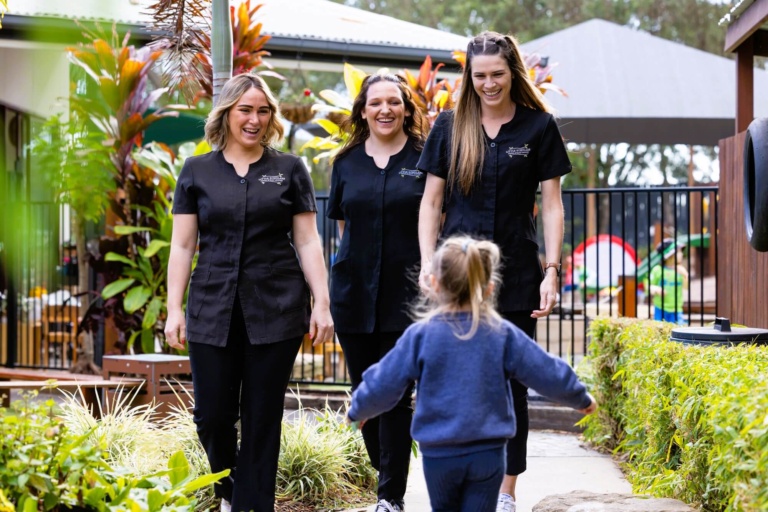
We know that children are naturally curious and full of energy, which can sometimes lead to accidents. That’s why at Little Scholars, we focus heavily on proactive safety measures to prevent injuries. Our classrooms and play areas are designed with safety in mind, with soft play surfaces and age-appropriate equipment that encourages exploration in a controlled, safe manner.
In addition to our physical environment, our educators are always on the lookout, providing constant supervision to ensure that children are not only safe but also engaged in activities that support their development. Whether it’s during active playtime, art projects, or quiet reading sessions, our educators are trained to supervise and intervene when necessary, ensuring every child’s wellbeing.
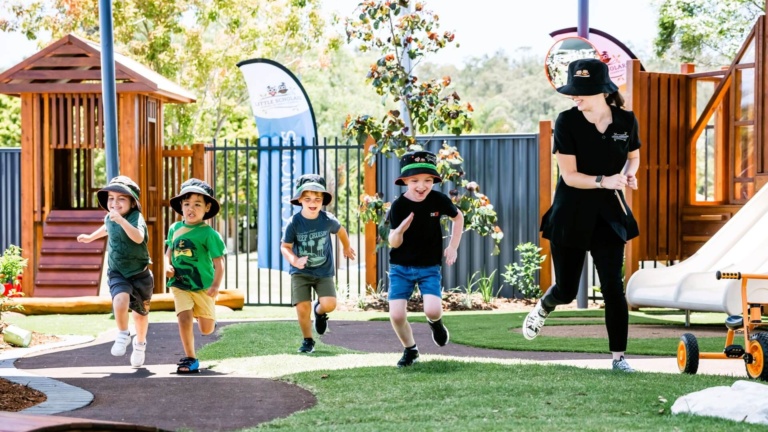
In addition to physical safety, we also prioritise hygiene at Little Scholars. Keeping children safe from illness is a top concern for all parents, and we take extra steps to maintain a clean environment. Our staff follow strict hygiene protocols, including regular hand washing, sanitising surfaces and toys, and ensuring that sick children stay home to prevent the spread of illnesses.
We understand that the first few years of a child’s life are crucial for building their immune system, and we aim to protect all children in our care by promoting healthy habits and cleanliness throughout the day.
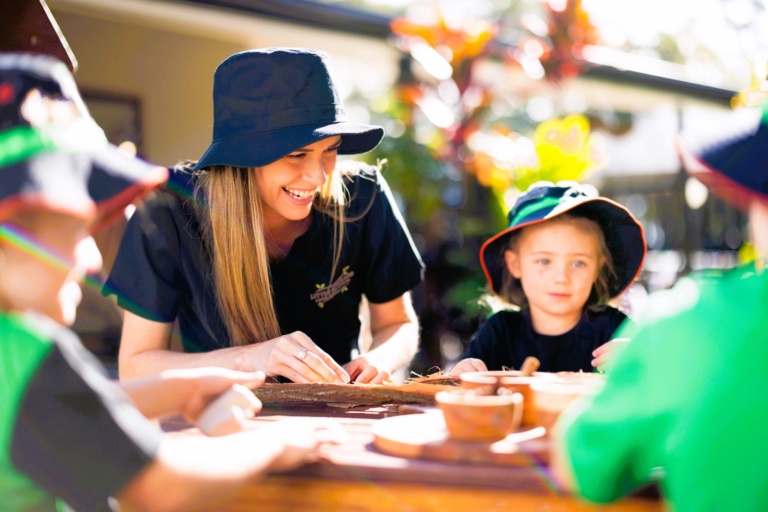
Child safety isn’t just about physical protection – it’s also about how children feel in their environment. At Little Scholars, we know that emotional safety is just as important. A child who feels secure and valued is more likely to thrive, both socially and cognitively.
Our educators are trained to create a welcoming, supportive environment where every child feels comfortable and included. We focus on fostering emotional intelligence by teaching children how to express their feelings, respect others, and manage social challenges in a positive way. Whether it’s helping children resolve conflicts with peers or offering encouragement during new experiences, our team creates a space where children feel emotionally safe to explore and learn.
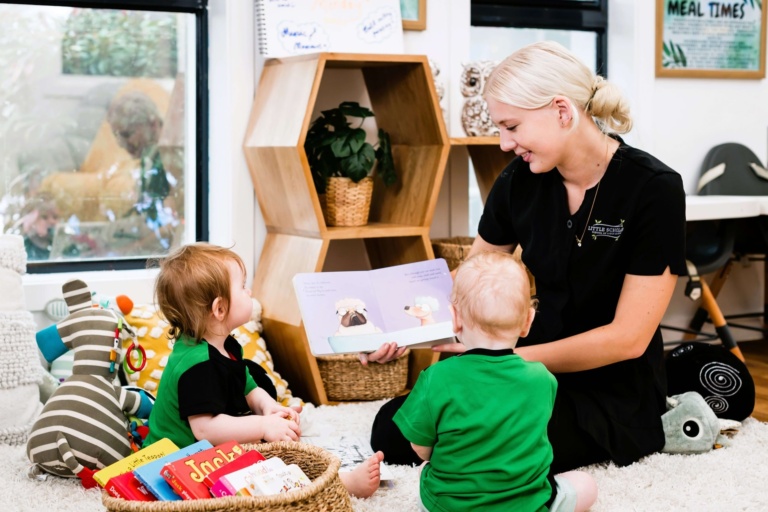
Child protection is a fundamental part of our safety practices at Little Scholars. We go beyond the standard practices of keeping children safe – we have comprehensive child safeguarding policies that are regularly updated to reflect best practices in the sector. Our policies ensure that all staff undergo background checks and are trained to recognise and respond to any signs of abuse or neglect.
Additionally, Little Scholars fosters an open line of communication with parents and guardians. We encourage you to be an active part of your child’s safety journey, and our team is always available to discuss any concerns or questions you may have.
Our Operations Manager, Melanie Excell, is a recognised Children’s Rights Queensland Ambassador, working closely with the community to raise awareness and advocate for children’s rights across the state – reinforcing our commitment at every level of leadership.
We also empower children through programs like the Bravehearts Ditto’s Keep Safe Adventure Show, which teaches children personal safety skills in an age-appropriate, engaging way.

With so many childcare options across Southeast Queensland, why do parents choose Little Scholars? It’s our unwavering commitment to safety, combined with a nurturing environment that supports every child’s growth and development. We’ve earned the trust of countless families because we genuinely care about the safety and wellbeing of each child in our care.
At Little Scholars, we believe that a safe environment is one where children can grow, learn, and reach their full potential. By providing a secure, caring, and stimulating environment, we ensure that your child will thrive both physically and emotionally, giving you the peace of mind you deserve.
Your child’s safety and wellbeing are our top priority. To ensure that every parent feels confident in their decision, we’ve created a Child Safety Checklist that you can download for peace of mind, along with detailed information on our safeguarding policies. Download the checklist here.
For more information about how we keep your child safe, please visit our Child Safeguarding page. We look forward to welcoming you and your little one to Little Scholars, where safety and learning go hand in hand.
Did you know only about a quarter of Australian children aged 0-4 years regularly participate in organised sport and physical activity?
At Little Scholars, we know physical activity for children is vital — not just for health today, but for optimal physical, emotional, and brain development. Early movement builds strong bodies, confident minds, and lifelong healthy habits. The daily recommendation for children each day for physical activity ranges, so here we’ll break it down by age:
Even before they start moving, babies should be active multiple times a day.
This can include:
Once they become mobile, activities like crawling, pulling up on furniture, and eventually walking (if ready) help build strength and coordination. Creating simple obstacle courses can encourage movement in a fun way.
Toddlers thrive on active play and should have at least three hours of physical activity each day, spread throughout the day. This should include energetic movement like running, jumping, twirling, skipping, and dancing. Playing tips, ball games, or setting up fun obstacle courses at home or in the park are great ways to keep them moving. The focus should be on making activity fun and encouraging exploration.
Preschoolers also need at least three hours of activity daily, with at least one hour of energetic play. Running, jumping, throwing, kicking, skipping, and dancing all help develop coordination and strength. Activities should be spread across the day and designed to be enjoyable, encouraging curiosity and movement through play.
At Little Scholars, we’re focused on the holistic growth of the whole child, not just building those rapidly developing brains, but ensuring we’re helping these little bodies grow strong and capable, all while learning valuable skills through play. By encouraging regular movement and active play, we’re helping children develop lifelong healthy habits. Whether it’s running, jumping, climbing, or dancing, every movement helps children grow in confidence and ability. We believe in creating an environment where children can thrive physically, mentally, and emotionally through play and learning.
Book a tour at one of our 17 locations across the Gold Coast, Redlands, Brisbane and soon Ipswich to see how we incorporate physical activity into our learning curriculum!
Why we should encourage risky play in early childhood
The importance of outdoor play for children’s development
How mindfulness enhances child development
The best playgrounds on the Gold Coast, Redlands, Logan and Brisbane
Wondering how to start your baby on solids? Introducing solids is an exciting milestone for you and your baby! Around six months of age, most babies are ready to explore new tastes and textures alongside breastmilk or formula. At Little Scholars, we support families through this journey, whether you choose purees or baby-led weaning with soft whole foods.
Most babies show signs of readiness for solids around six months. Look for these cues:
Sitting up with minimal support
Showing interest in your food
Opening their mouth for a spoon or reaching for food
Losing the tongue-thrust reflex (pushing food out of their mouth automatically) Though as babies begin to take in food, this instinct may remain until they get used to it.
Whatever way you approach the first tastes, go slow and offer just a couple of teaspoon-sized portions at first. Hand them a spoon to let them hold, though they’ll likely just eat (squish) with their fingers
You can start by offering food once a day alongside their normal amount of breast milk or formula, then work your way up over the coming weeks to three or more feedings a day.
To help babies adjust to the unique tastes of foods, one approach we like starting with vegetables for the first 14 days, one new, iron-rich vegetable each day. This helps develop a taste for nutritious foods before introducing fruit or other sweet flavours, as they’re already accustomed to sweet flavours through formula or breast milk.
Queensland Health recommends including iron-rich foods every day to help baby grow well, such as lean meat and legumes, baby cereal with iron, and green leafy vegetables. Of course, you’ll need to work up to these denser foods. It’s also recommended to introduce nuts into diets soon, as this can help reduce allergies. However please note we do not offer nut products at our campuses.
We support both traditional purees and baby-led weaning (BLW). Here’s how they differ:
Purees: Smooth textures, spoon-fed by a parent or educator, with gradually thicker consistencies over time.
Baby-led weaning: Soft, whole foods in safe shapes that babies can pick up and feed themselves, encouraging independence and coordination.
Regardless of your approach, always supervise your baby while they eat and offer soft, easy-to-swallow foods. At our campuses, babies are closely supervised during meals and snacks, but we also use these as opportunities to bond, having lots of fun interactions and conversations with our little ones while they eat!
Offer solids when your baby is alert and in a good mood
Start with small amounts. A teaspoon or two is plenty at first
Encourage exploration. Expect mess, it’s part of the learning process!
Be patient. Some babies take time to adjust to new textures
Watch for allergies. Introduce new foods one at a time, leaving a few days in between common allergens like eggs, dairy, or nuts.
At Little Scholars, we help families introduce solids in a way that works for them. Our educators can support your baby with purees or baby-led weaning while ensuring meals are safe, nutritious, and enjoyable. We work closely with families to understand preferences and keep you informed about your baby’s progress.
Starting solids is an exciting step in your baby’s development. With patience, variety, and support, mealtimes can be a wonderful experience for both of you!
We aim to be an extension of your family and are here to support you and your child during those important childhood milestones. If you’re in need of high quality early childhood education for your little ones in South East Queensland, book a tour today.
Babies are a mysterious bunch. For many months, their main forms of communication are cries, squeaks, gestures and coos. Parents fall madly in love with these little humans without knowing what they’re thinking and feeling, often just guessing at best.
How babies play, how and what they’re learning, and what they’re interested in can be a mystery to many. Many parents have seen their baby pull out every book off a shelf, for example, watch it fall, then grab another, while that parent scratches his or her head and says ‘why?’
There’s an answer. It’s a schema. A schema is both a category of knowledge as well as the process of acquiring that knowledge. In play, babies are often involved in repeated actions or certain behaviours as they explore the world around them and try to find out how things work. Those repetitive actions, such as a baby pulling out book after book, allows a child to practice and construct meaning to something, until they’ve understood that schema. Then they find something else to focus on and lather, rinse, repeat!
As Yvette, educational lead from our Burleigh campus says, it’s children’s development making sense.
“All of those little things that you see children do that seem a bit cute, or frustrating even, like throwing, it’s a schema, a child’s pathway of development for making sense of the world,” Yvette says.
The repetitive action of a schema allows a child to practice and construct meaning until they have mastered the understanding of the schema. Being aware of play schemas helps in two ways:
There are a number of types of schemas when it comes to babies.
Trajectory schema – The trajectory schema is one of the earliest schemas observed in babies. They are fascinated with how they, and objects move. Children will often throw objects or food from their pram or highchair. They climb and jump in puddles and enjoy exploring running water.
Transporting schema – Little ones enjoy repeatedly moving resources around, from one place to another. They will carry many items at a time using their hands, pockets, containers,
baskets, bags, or anything else that will hold their newfound treasures.
Enclosing schema – Children show an interest in enclosed spaces. They may want to sit (and hide in) boxes or laundry baskets. Or they may show interest constructing fences and barricades to enclose toy animals or themselves.
Rotational schema – Children showing a rotational schema may display a preference for turning taps on and off, winding and unwinding string, and playing with
hoops. They may also be fascinated with the physical experience of twirling and twisting their body, spinning around on the spot, or rolling themselves down a hill. They have an interest in things that turn, such as wheels and windmills. They enjoy rolling tyres around, turning lids and watching the washing machine on a spin cycle.
Enveloping schema – Children with an enveloping schema are interested in covering and hiding items, including themselves. They will enjoy dressing up, and filling and emptying bags and containers with different objects.
Connecting schema – Children displaying the connecting schema want to join items together. They find resources like string to tie things. They connect and disconnect toys such as rail tracks.
They enjoy construction toys, and doing arts and crafts where they can glue and stick pieces together.
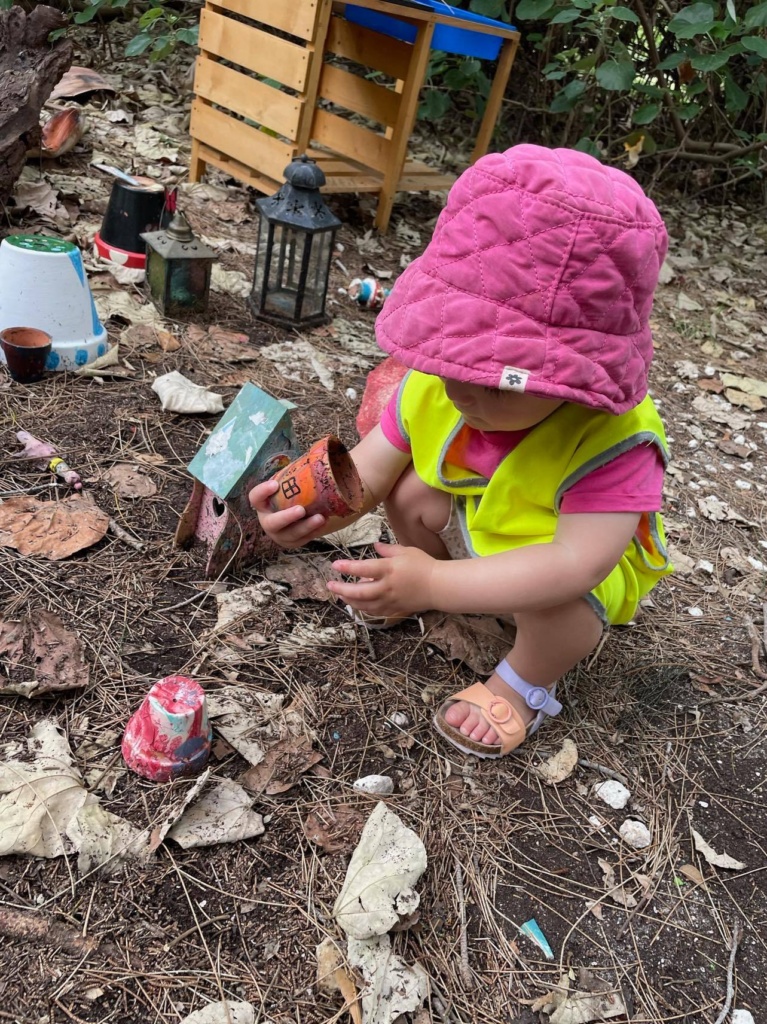
Orientation schema – Children like to turn objects and themselves around and upside down, to get a view from under the table or from the branch of a tree. They may bend over and look at the world backwards through their legs. They enjoy seeing things from a different view when exploring using cardboard tubes, binoculars or a magnifying glass.
By adapting this theory, we have been able to slow down and become more in tune to the children and noticing their behaviour patterns in play. It is now so important to us that we allow our babies and young children the time to explore the repetitive actions of schematic play.
-Jodie, lead educator
Jean Piaget was one of the first to use the term “schema” back in 1923. Piaget was an important child development theorist and his Theory of Cognitive Development was and still is read and followed today by early childhood specialists. He was one of the first who believed children think differently than adults and that they have an innate desire to learn and actively build up their knowledge about the world. They are not passive creatures waiting for someone to teach them.
Susan, our group pedagogical leader, is bringing her schema knowledge across our campuses to the lead educators in the nursery and toddler studios in 2023. Learn a bit more below about how we use schema theory, and how one educator has taken it on in her nursery.
Schematic Pedagogy
Through our collective curriculum, our educators are guided through a ‘schematic lens’, meaning they can plan for children’s thinking, not just activities. This has a strong link to our Collective Curriculum, our educational program for children.
The learning environment
Our educators apply teaching methodologies to design their play spaces and are intentional in the resources offered.
Observing and planning for children’s thinking
Through our collective curriculum, our educators observe the children through their play, to determine schemas explored through the children’s engagement to an activity or resource. Through observing patterns of learning, our trained educators can plan forward to scaffold their cognitive capabilities.
Partnering with children in play
Through ongoing mentoring and coaching, our educators are able use their knowledge of schemas and plan effectively. Our educators are encouraged to partner with children in their play and observe behaviours explored through schemas.
“Schemas are an intrinsic part of child development, knowledge to schemas provide our team of educators an opportunity to identify and encourage independence in children as they explore patterns of movement, often related to schemas,” Susan says. “Supporting assessing through a schematic lens, provides our educators with a framework which can be used to analyse children’s learning, supporting the planning process within our curriculum.”
You may be wondering if you have a baby or a small toddler in one of our campuses, how we use schemas to help their development. We talked to one of the educators at our Deception Bay campus about using schemas for educational programming. Deception Bay Little Scholars was recently rated as Exceeding the National Quality Standard (NQS) after it was assessed by the Department of Education. The NQS sets a high national benchmark for early childhood education and care in Australia. Jodie, lead educator in the nursery studio, says learning about schemas was a game-changer.
Both our younger babies and older babies really enjoy dropping objects or putting things in and out of containers (vertical trajectory). Using old formula tins and cutting an opening in the top with lids from jar foods a milk bottle lids, is a big favourite.
Our older babies are seen continuing with trajectory and begin to start exploring other forms of schematic play like, transporting, rotation, connecting and this can lead to a disconnecting schema where the child builds something that they can demolish or through [activities like] untying knots, as well as enclosing, positioning, enveloping and orientation, such as looking at things from different viewpoints like hanging upside down, looking through their legs, looking at things upside down. No wonder our little people are so busy and on the go all the time!
Thanks, Jodie!
Related:
Pedagogical Practices: Bringing new learning techniques to Little Scholars
When a baby or toddler is ready to reduce the number of naps they have each day, or even drop naps altogether, this can be an equally challenging transition for parents!
Daytime naps naturally lessen in length and frequency as a child gets older because they can tolerate more awake time, from both a physiological and neurological perspective as they grow. Circadian rhythms – your 24-hour body clock that helps control your daily schedule for sleep and wakefulness – also mature as sleep begins to consolidate, particularly at night.
Especially for new parents, you may be wondering what some of the signs are that your child is ready to drop a nap. Dropping a nap is a transition that happens over time. Babies need to decrease their number of naps incrementally, but that won’t happen on its own, babies and toddlers still need your guidance to help ease these changes. And our educators are here to help.
Since our educators spend a few days a week with your little one, they have the knowledge of what to look for in signs of tiredness, or readiness to stay awake just a little longer! It’s important to remember that each child is different. What works for one, won’t work for another exactly the same age or way, and this is not a process to rush, small people need their rest!
Here are some signs that may show your little one is ready to drop a nap:
“For some children, cutting down their bottles or altering their times they have bottles (obviously age-appropriate) may help with stretching wake windows,” says Hayley, an educator with our Deception Bay campus.
“We aim to wake the child through gentle means, such as hustle and bustle around them to help them wake more naturally, which can help too.”
Hayley says looking at wake windows as a guide for your child can help and you can find free resources and blogs by sleep experts online. But she says keep in mind small children going through leaps and teething may have more difficulty with their sleep, but these adjustments are usually temporary.
Keeara, an educator in the nursery at our Yatala campus says they’ve had some parents request help in stretching their child’s nap to one sleep to transition in the toddler room.
They find play in an outdoor environment during the morning keeps little ones occupied enough to stay awake – but says if their children did fall asleep, it was obviously needed, and educators will try for a short afternoon nap to make up for it.
Fresh air and active fun like sensory activities are a great way to stretch that wake time out a little longer for little ones. Maybe for your child, it’s making music or playing with different textures that will keep him or her engaged and interested just a little longer.
Our Facebook and Instagram channels offer ideas on creative activities our educators do across our campuses to entertain little ones, which can really help stretch out those wake windows.
Like Hayley, Keeara and her fellow educators have also found works is having lunch around 11:30 and putting bottles on the warmer at the same time so they’re ready to go when lunch is finished.
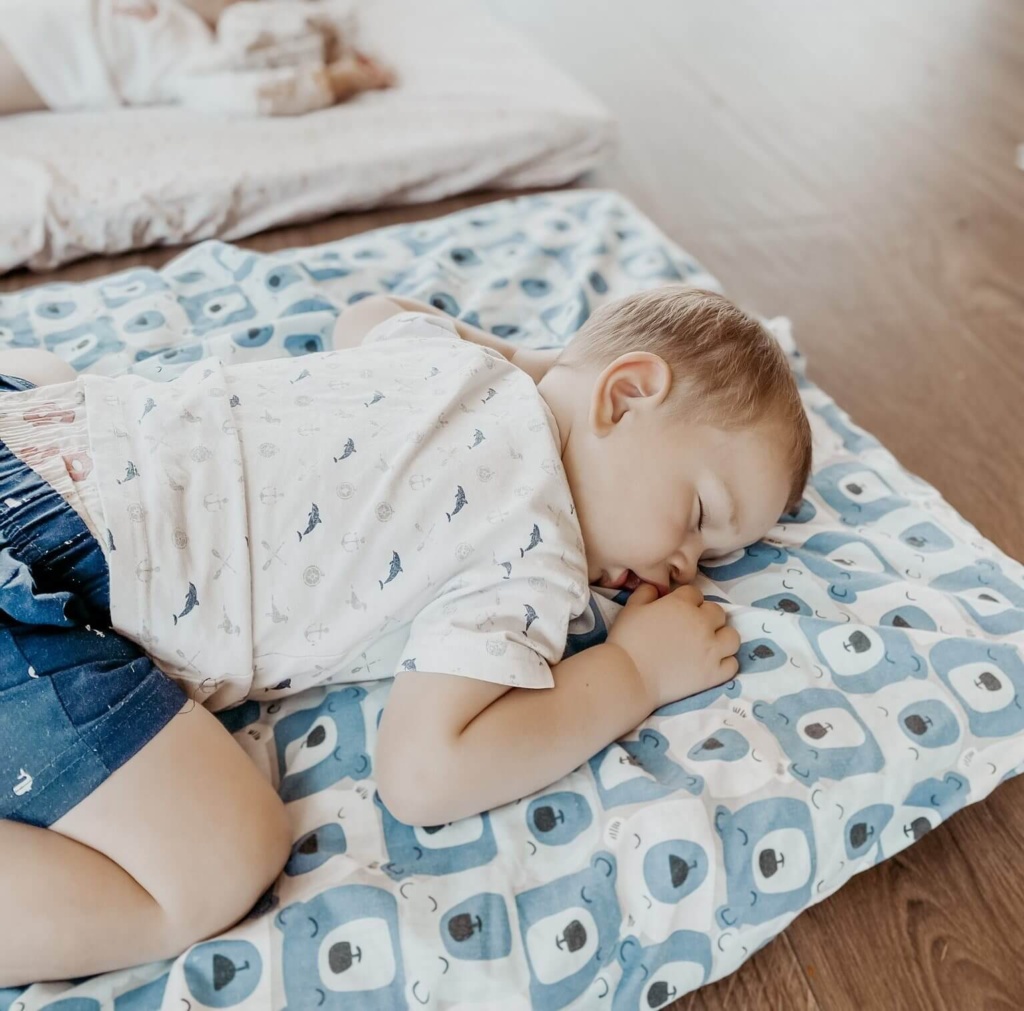
“We’ve found most of the children would have their bottle then self-settle in their cots as they were so exhausted at this point,” Keeara says. “Surprisingly, it worked really well and made the transition smoother, they even slept for a longer period of time having just the one sleep.”
Then comes the (often dreaded by parents) time when children are ready to drop naps completely.
“We have a fair few two-three-year-olds in our room who have dropped sleep,” says Skye, an educator at our Yatala campus. “The most common sign for them was becoming upset at rest time, moving around a lot and getting up for drinks, toilet and to just tell us something.”
She says even if educators suspect a child is ready to drop naps, they start off with still giving the child a bed, but giving them a quiet activity like books, puzzles, or drawing supplies.
“That way they still have the option to fall asleep if they want to, if they haven’t slept the whole week, we then move them to an activity mat that we keep clear of beds, again for quiet activities while their peers sleep,” Skye says.
Independent play is also important for your child’s development, and it’s central to effective quiet time, so it’s worthwhile implementing it into your older toddler’s daily routine. Quiet time is a time during the day where your child has an opportunity to rest their busy little bodies and minds. The length of quiet time can range anywhere from 45 minutes to 2 hours, depending upon the child, but consistency in this new quiet time will work wonders for the whole family.
Skye says dropping naps is something they talk to parents about, and from those discussions, they work together on a plan to help the child adjust.
So you’ve decided to send your child to early learning – how exciting!
For first-time parents, preparing for this new chapter involves more than just packing a backpack, it means understanding key essentials like the Child Care Subsidy (CCS). Navigating the CCS can seem daunting, but fear not! We’ve written a comprehensive guide to help demystify the process to help you understand how to maximise this support for your family’s benefit.
Here in this CCS explainer, we will lay out everything you need to know about and to apply for CCS, making it easier for you to support your child’s educational adventure.
Did you know you can apply for the Child Care Subsidy (CCS) before you enrol your child in early learning?
Wait, what’s CCS? The Child Care subsidy is assistance to help families with the cost of childcare. Your child’s day in early learning is payable by a daily fee charged by the centre. The government may cover some of this fee, depending on your individual circumstances. This is what is referred to as the ‘subsidy’.
You may be eligible for the Child Care Subsidy if you meet a number of factors. The Child Care Subsidy (CCS) changed in July 2024 for families earning under $533,280. The percentage of CCS will vary depending on your family’s income, and the income limit to receive the maximum allowed CCS will increase as well. For families whose income is up to $83,280, you could receive up to 90% from the CCS toward your child’s daily fee.
If you have two or more children in care, subsequent children are eligible for a higher subsidy than the first child. For families who earn a total income of up to $141,321, those children will receive 95% from CCS off your daily fee.
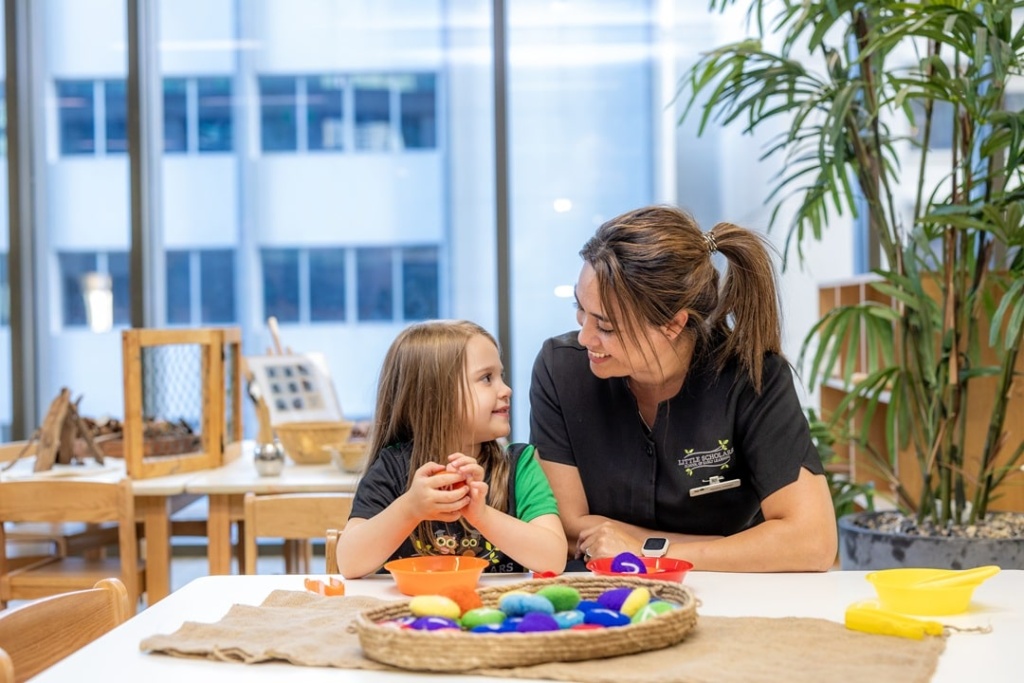
There are several requirements to qualify for the Child Care Subsidy. You may qualify if:
• You or your partner care for the child a minimum of two nights / fortnight
• You or your partner are responsible for childcare fees
• The child meets immunisation requirements
• You use an approved child care service like Little Scholars!
Once you’re ready for your child to go into early learning, you can apply for CCS!
The CCS works on three factors:
• Your total combined family income
• The service type. This can be long day care, or outside-hours care such as vacation care
• How much ‘work-related’ activity you and your partner undertake each fortnight This includes paid work, volunteering, study and other activities as determined by education.gov.au. Job hunting, studying, starting a new business, volunteering and travel time – among others – are all eligible activities that will allow you to claim subsidised hours of care.
Our website has a handy calculator you can use to get an idea of how much CCS you’ll receive.
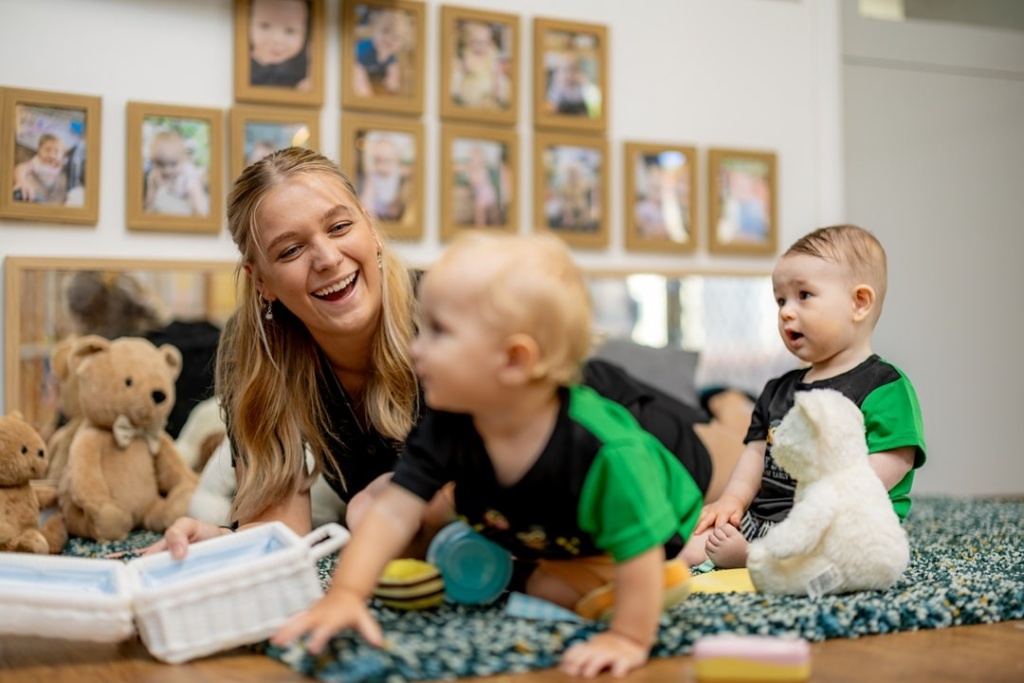
Apply for CCS via your MyGov Account, which is linked to Centrelink.
We recommend you do this as soon as you know when you might be sending your little one into early education and care, so it’s all set up and ready to go for your child’s first day. Don’t necessarily wait until you’ve enrolled with an early learning campus, because the entire process may take between four and six weeks, and if it’s not set up when you begin care, you may be paying full fees until it’s all complete.
Once your spot is booked in, confirm your Complying Written Agreement (CWA). When a CWA enrolment notice is created by the campus manager, there are two steps that need to be completed by the family:
1. You will be notified by email that the CWA is ready for you to agree to. A reminder will be sent via email should you not sign within 48 hours
2. Confirm your child’s government enrolment via MyGov. If you do not agree to the government enrolment, CCS cannot be paid.
During your Child Care Subsidy claim via MyGov, expect Services Australia to request a variety of documents to verify your eligibility. These may include financial details like bank account information, tax file numbers, and insights into your assets. Academic records, work-related documents like tax returns or pay slips, details about your living situation, relationship specifics, any international residence proofs such as visas, documentation regarding your children, and any relevant medical records are also crucial. Now that you know what to expect, we’d suggest these are prepared in advance to streamline your claim process.
Finally, we know change can be scary, overwhelming or confusing, as much for our parents as our little ones. We’re here for you from the day you book your tour to the day your child finishes their last day of kindergarten. We can absolutely help you navigate the CCS and other documents you need to help your child become a little scholars. Reach out to your campus manager, admin or any of the leadership team for guidance or further questions.
Let us hold your hand and help looking for a child care centre. Leave your details with us and we’ll be in contact to arrange a time for a ‘Campus Tour’ and we will answer any questions you might have!
"*" indicates required fields
Let us hold your hand and help looking for a child care centre. Leave your details with us and we’ll be in contact to arrange a time for a ‘Campus Tour’ and we will answer any questions you might have!
"*" indicates required fields